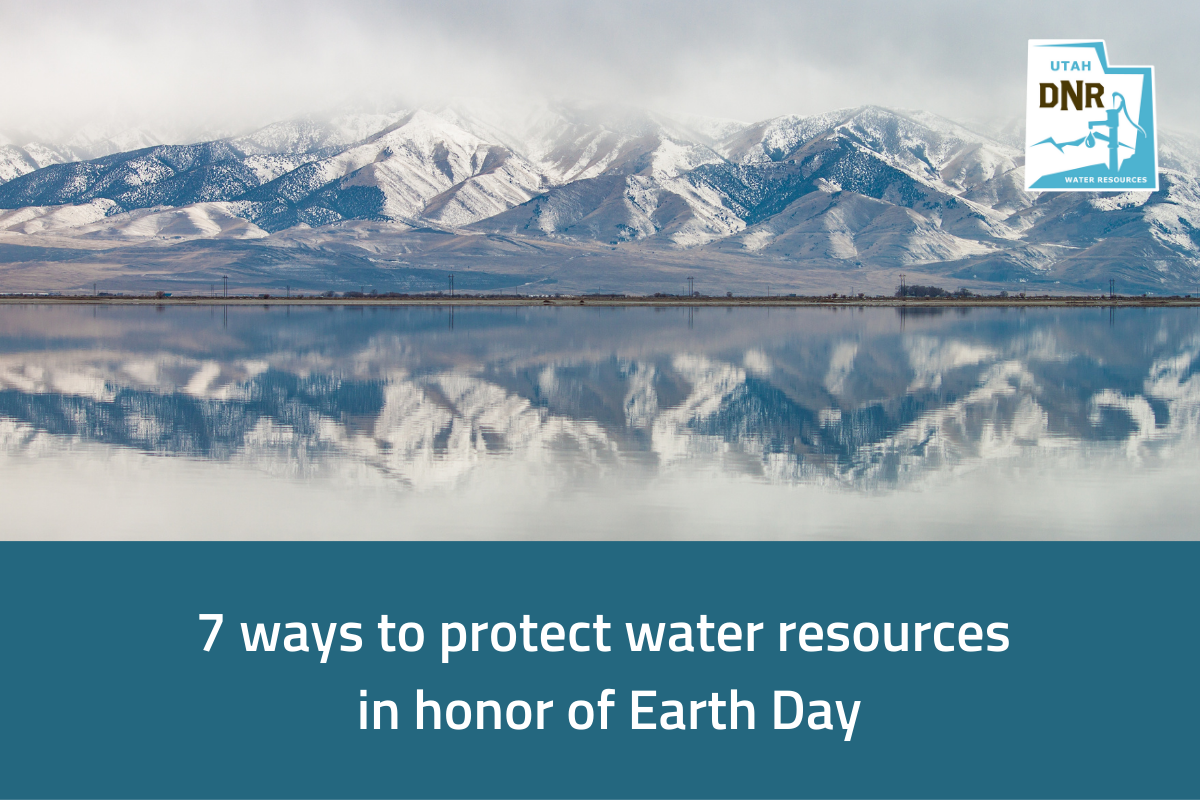April 21, 2025 — Earth is a watery place. When we look at a photo from space, it’s easy to see that our planet has more water than land. But of all the water on Earth, more than 99-percent of it is unusable by humans and many other living things. It’s surprising that the water that supports all terrestrial and aquatic life on our planet is actually so scarce!
(more…)Utah Water Conditions Update April 2025
Published 04-18-25
Residents of Utah Saved Over 100 Million Gallons of Water Through Landscape Conversions in 2024
Published 04-17-25
SALT LAKE CITY (April 17, 2025) – Over 100 million gallons of water will be saved each year through landscape conversions in the 2024 Landscape Incentive Program. This vital initiative, led by the Utah Division of Water Resources and Central Utah, Jordan Valley, Washington County, and Weber Basin Water Conservancy Districts, empowers residents and businesses to save water while reducing water bills and contributing to Utah’s long-term water resilience.
(more…)Project database submission is open for the Unified Water Infrastructure Plan
Published 04-08-25
SALT LAKE CITY (April 8, 2025) — Utah is creating a Unified Water Infrastructure Plan (UWIP). The UWIP is a comprehensive list of water infrastructure projects that will potentially need state funds. Water infrastructure projects must be submitted to the UWIP Project Database by May 9, 2025 in order to qualify for state funding.
(more…)Utah Water Conditions Update March 2025
Published 03-27-25
SALT LAKE CITY (March 27, 2025) – Utah is grappling with varied water conditions. While recent storms have brought the statewide snow water equivalent to 82% of normal peak for the year, southern Utah continues to trend much below normal.
(more…)Confronting Great Salt Lake’s dust dilemmas
Published 03-07-25
SALT LAKE CITY (March 7, 2025) — The Utah Division of Water Resources has been hard at work on the Great Salt Lake Basin Integrated Plan for a little over a year now, and a handful of its projects are in full swing. The integrated plan — funded with $5 million by the Utah Legislature in 2022 (HB 429) and $3.1 million from the Bureau of Reclamation’s basin study program — aims to ensure a resilient water supply for Great Salt Lake and all water uses, including people and the environment, throughout the watershed. The research projects that make up the integrated plan range from groundwater well monitoring, to identifying water requirements for shorebirds and a lot more in between. Once complete, the integrated will be a robust planning tool that will inform future water management decisions within the basin.
(more…)Cloud Seeding Part 2: Why Utah’s skies are ideal for cloud seeding
Published 02-19-25
This article is the second in a four-part blog series exploring cloud seeding and Utah’s efforts to bolster snowpack. Here, in Part Two, our meteorologist dives into why cloud seeding works well in Utah. Read Part One to learn about the fundamentals of cloud seeding — what it is, how it works and why it matters. Part Three covers how we ensure safety and best practices while Part Four clarifies common myths and misconceptions.
Utah Water Conditions Update February 2025
Published 02-18-25
SALT LAKE CITY (Feb. 18, 2025) – Utah’s snowpack has raised concerns among water managers. The state’s snowpack sits at 93% of normal, with two southern Utah basins recording less than 50% of normal snow water equivalent (SWE). Extreme drought has reappeared in southwestern Utah for the first time since March 2023.
(more…)Cloud Seeding Part 4: Clearing the air — myths and misconceptions
Published 02-05-25
This article is the fourth in a four-part blog series exploring cloud seeding and Utah’s efforts to bolster snowpack. Here, in Part Four, our meteorologist addresses common myths and misconceptions about cloud seeding. Read Part One to learn about the fundamentals of cloud seeding — what it is, how it works and why it matters, Part Two to dive into why cloud seeding works well in Utah and Part Three to understand how we ensure safe and best practices.
Cloud Seeding Part 3: How Utah ensures safe and best practices
Published 02-05-25
This article is the third in a four-part blog series exploring cloud seeding and Utah’s efforts to bolster snowpack. Here, in Part Three, our meteorologist addresses how we ensure safe and best practices. Read Part One to learn about the fundamentals of cloud seeding — what it is, how it works and why it matters. Part Two dives into why cloud seeding works well in Utah, while Part Four clarifies common myths and misconceptions.










